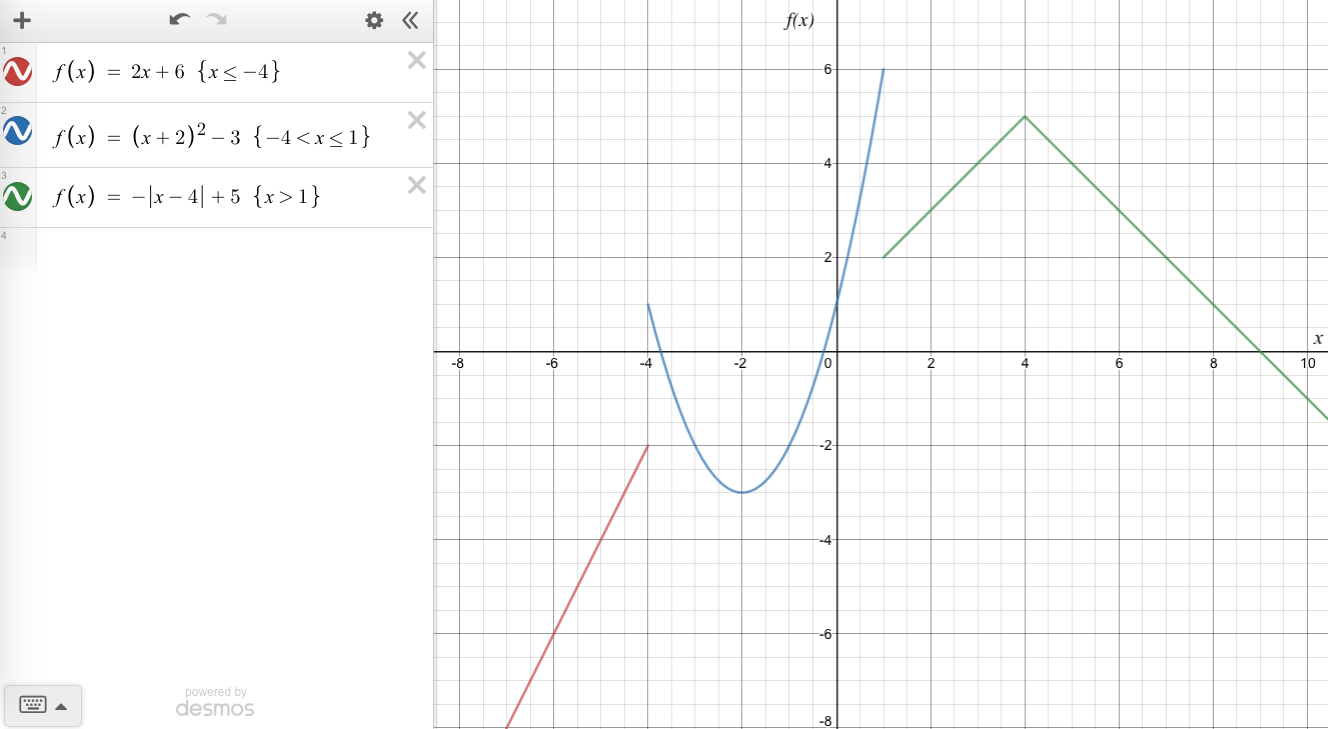If A = {2, {4, 5}, 4}, true or false:
| statement | restating the statement | answer | _____because... |
| |
| 1.___ | {4, 5} ⊂ A_____ | {4, 5} is a subset of A | _____False_____ | 5 is not an element of A. | |
| 2. | {4, 5} ∈ A | {4, 5} is a element of A | True | The set {4, 5} is an element of A. |
|
| 3. | {{4, 5}} ⊂ A | {{4,5}} is a subset of A | True | The set {4, 5} is an element of A. | |
| 4. | {2} ⊂ A | {2} is a subset of A | True | 2 is an element of A |
|
| 5. | {2} ∈ A | {2} is an element of A | False | The set {2} is not an element of A. | |
| 6. | 2 ∈ A | 2 is an element of A | True | 2 is an element of A |
|
| 7. | {{4, 5}} ∈ A | {{4, 5}} is an element of A | False | The set of the set {4, 5} is not an element of A |
Our answers are different on 1 and 3.
Also...I don't know if the ⊂ symbol means a proper subset or just a subset, but it doesn't really matter for these questions.
1.
Graph the function \(f(x)=\begin{cases} x+6 & x\leq -4 \\ (x+2)^2-3 & -4< x\leq 1\\ -|x-4|+5 & x>1 \end{cases} \)
Here's the graph of the function on desmos:

https://www.desmos.com/calculator/de2hbs4llz
Notice that the way to specify an interval on desmos is by putting it inside { }'s at the end of the equation.
What is the value f(x) = -3 ?
I think this is asking what x values make f(x) be -3.
On the graph, we can look for values of x that make f(x) be -3 .
There are three different x values that make f(x) be -3.
f( -4.5 ) = -3
f( -2 ) = -3
f( 12 ) = -3
Explain how you would graph something like this without using Desmos:
You could plot points, making sure to plot points within each of the three intervals, and using the knowledge that the first piece is a part of a line, the second piece is a part of a parabola, and the fourth piece is a part of an absolute value graph.